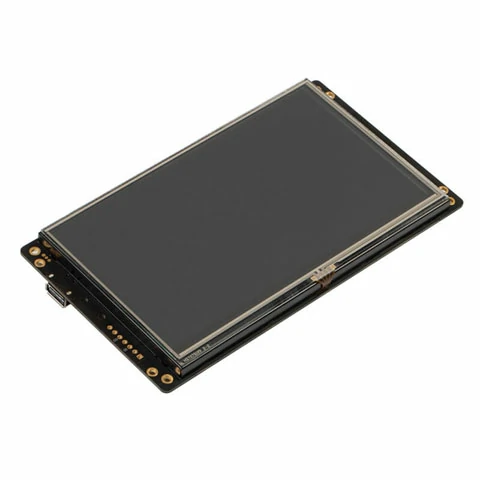The Viewing Angle of TFT LCD display Screens
4 min read
LCD is a backlight display device. The light is provided by the backlight behind the LCD module. When the backlight passes through the polarizer, liquid crystal, and orientation layer, the output light has directivity.
That means most of the light is coming straight out of the screen. Therefore, when you look at the LCD from a large Angle, you can’t see the original color, some time even just white or black color can be seen. The Angle (left and right, up and down) at which the original color appears on the screen is called the Viewing Angle of TFT LCD display Screens.
There are different visual effects from different view angles when viewed from the middle and side of the LCD display screen, the intensity of light entering the human eye is different. For the same picture, there is a light and dark part, and the contrast is different. With the definition of perspective, the corresponding perspective of the LCD screen is perspective within the acceptable contrast range of human eyes.
As long as the horizontal viewing angle reaches 120 degrees and the vertical viewing angle reaches 140 degrees, the LCD on the market can fit the application needs of most users. The latest LCD screens are made with wide-angle technology, which can reach up to about 150 degrees, reducing the inconvenience caused by the small viewing angle.
There are 3 popular techniques for a wide display viewing angle so far, which are TN+FILM, IPS(in-plane -SWITCHING), and MVA(multi-domain VERTICAL alignment).
TN+FILM display technology:
Add a layer of wide-viewing angle compensation film. This compensation film can increase the visual Angle to about 150 degrees, which is a simple and easy method and is widely used in LCD.TN+FILM may not be the best solution for manufacturers, but it is the cheapest solution, so most Taiwanese manufacturers use this method to build 15-inch LCDs.
IPS (in-plane Switching) display technology:
The technology is the LCD panel technology introduced by Hitachi in 2001. The biggest feature of the IPS panel is that its two poles are on the same surface. Since the electrode is in the same plane and the liquid crystal molecules are always parallel to the screen in any state, the opening rate and the light transmittance will be reduced. Therefore, the application of IPS in LCD TV requires more backlights.
The advantage of the IPS panel is high visual Angle, fast response, accurate color restoration, and cheap price. However, the disadvantage is the light leakage problem. And the black purity is not enough, which is slightly worse than PVA. So it needs to rely on the compensation of optical film to achieve better black purity. Compared with other types of panels, the screen of the IPS panel is relatively “hard”, and it is not easy to appear water pattern deformation with a gentle stroke of the hand, so it is called a hard screen.
MVA(multi-domain vertical alignment) display technology:
The idea is to add protrusions to form multiple visible areas. The liquid crystal molecules are not arranged vertically at rest, but horizontally when a voltage is applied, allowing light to pass through the layers. MVA technology improves viewing angles above 160 degrees and provides a shorter response time than IPS and TN+FILM.
In the MVA (multi-domain vertical alignment) display technology, horizontal and vertical viewing angles are wider than those of the first two technologies, and there is basically no blind Angle or bright spot. The viewing angle is divided into horizontal and vertical viewing angles.
The horizontal viewing angle is the viewing range from the center of the vertical central axis to the left and right. The vertical viewing angle is the viewing range from the center of the horizontal center axis to the up and down. Viewing Angle takes “degree” as the unit. Currently, the commonly used annotation form is to mark the total horizontal and vertical range directly, such as 150/120 °. At present, the lowest visual Angle is 120/100 ° (horizontal/vertical), which cannot be accepted if it is lower than this value.
If you are interested in STONE TFT LCD module manufacturers or have any questions, please feel free to contact us, we will wholeheartedly for your service.
The Viewing Angle of TFT LCD display Screens
Related posts:
Touch Screen for Automated Feeding System
Intelligent sensor-based HMI solution for environmental monitoring
TFT display vs IPS display: What are the Differences, Features, Pros and Cons?
How TFT LCD Touch Screen Display Works
STONE TFT Screen ventilator Project: HMI Design, Control Creation, Hardware Connection and Command Testing
The whole process of LCD manufacture is explained in detail
What is TFT LCD?
Arduino Tutorial: STONE STWI101WT-01 HMI Display and Arduino
Basic Things You Need to Know About LCD Display
What Does TFT Meaning?
.webp)



